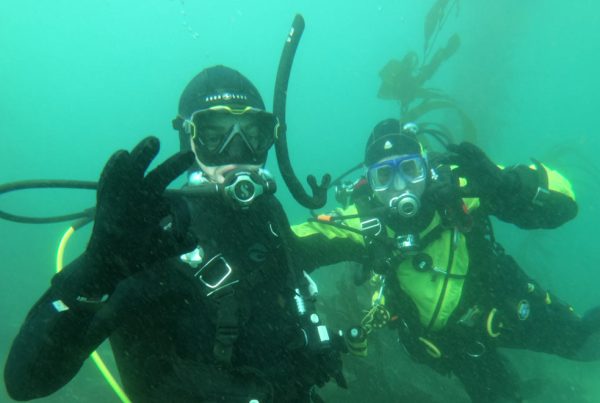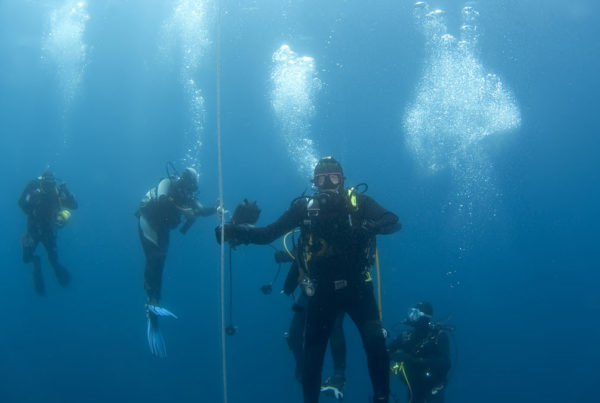You hear a lot about currents as the extreme danger. Yes, this is true for the ordinary swimmer. But for experienced beach divers they can be used to their advantage. A lot of divers do not know this. First, let’s consider the mechanics and makeup of a rip current.
What They Are
Rip currents (sometimes mistakenly called “rip tides”) are, simply put, the net flow of water away shore resulting from waves pushed up on adjacent beach areas. As water is pushed up onto shore by the surf, it has to find a way to flow back into the ocean — the path of least resistance. Usually this is to flow back under the next wave flowing in (sometimes called “under tow”). But when there is a trough on the sea floor in the surf zone, the water will find its path back out to sea through this trough. This flow is the rip current and, depending on the strength of the surf, can be quite strong, extending far offshore.
Coves will often have a prevailing rip current down the center of the cove. As waves enter the center of the cove, they bend, moving along the shore of either side of the cove at an angle creating a “long shore current” that moves to the center of the cove where these currents from both side of the cove converge. Again, that inflow of water seeks the path of least resistance and moves in rip down and outward through the center of the cove where the water is usually deeper, much like a trough.
Rip currents can often be easy to detect. A dirty plume of water will extend unusually far offshore. In addition, surf over the rip current will be diminished. When in doubt, check with the local lifeguard.
The Good
As many beach divers know, long arduous surface swims can be the order of the day. What if there was a way to get a current, moving away from shore, to take you out to your dive site? That is what a rip current can do!
If your dive site is offshore from a rip current, the current can take you there will little effort. This can be a fun and easy technique but there are some very important considerations.
The Bad
Remember, getting offshore on the E-ticket ride rip current can be fun, but you still have to get back in. Plan on swimming parallel to shore (perpendicular to the rip) to get out of its way on the way back in. In a cove, swim over toward the shore to get back in, but be aware if the long shore current is strong, you could be pushed right back into the rip and find yourself offshore once again. Diving with these techniques can be fun but you also need to be a strong swimmer to get yourself out of trouble should the worst happen.
The Ugly
Other than the possible dangers of using this technique for getting offshore, there is one additional possible disadvantage to rip currents in diving. Rip currents take dirty near shore water and dump it offshore, possibly over your dive site, destroying visibility.
The Choice
Ultimately, the choice is yours to dive or not to dive during any kind of beach conditions. Trying to use rip currents to your advantage is one additional twist to your beach diving skills that takes getting used to. Just use it with caution.










